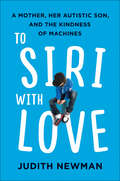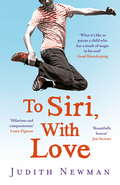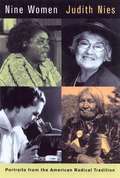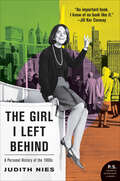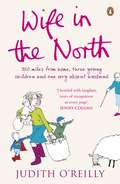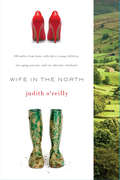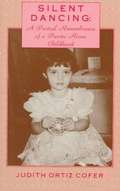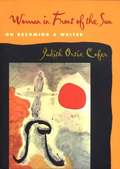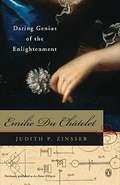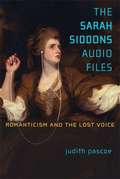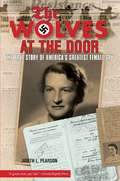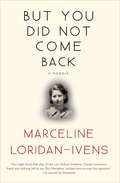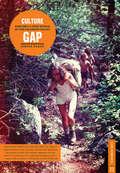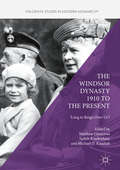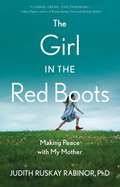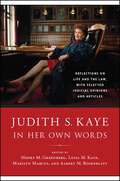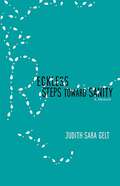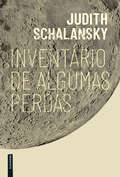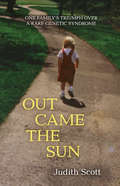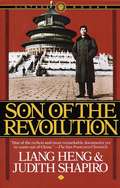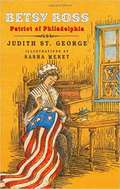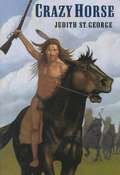- Table View
- List View
To Siri with Love: A Mother, Her Autistic Son, and the Kindness of Machines
by Judith NewmanA NEW YORK TIMES NOTABLE BOOK OF 2017From the author of the viral New York Times op-ed column "To Siri with Love" comes a collection of touching, hilarious, and illuminating stories about life with a thirteen-year-old boy with autism that hold insights and revelations for us all.When Judith Newman shared the story of how Apple’s electronic personal assistant, Siri, helped Gus, her son who has autism, she received widespread media attention and an outpouring of affection from readers around the world. Basking in the afterglow of media attention, Gus told anyone who would listen, "I’m a movie star."Judith’s story of her son and his bond with Siri was an unusual tribute to technology. While many worry that our electronic gadgets are dumbing us down, she revealed how they can give voice to others, including children with autism like Gus—a boy who has trouble looking people in the eye, hops when he’s happy, and connects with inanimate objects on an empathetic level.To Siri with Love is a collection of funny, poignant, and uplifting stories about living with an extraordinary child who has helped a parent see and experience the world differently. From the charming (Gus weeping with sympathy over the buses that would lie unused while the bus drivers were on strike) to the painful (paying $22,000 for a behaviorist in Manhattan to teach Gus to use a urinal) to the humorous (Gus’s insistence on getting naked during all meals, whether at home or not, because he does not want to get his clothes dirty) to the profound (how an automated "assistant" helped a boy learn how to communicate with the rest of the world), the stories in To Siri with Love open our eyes to the magic and challenges of a life beyond the ordinary.
To Siri, With Love: A mother, her autistic son, and the kindness of a machine
by Judith Newman'Incredibly moving' Daily Mail'To Siri with Love is a beautifully honest and illuminating love letter to Gus, your typical atypical nonneurotypical human.' Jon Stewart'A moving and witty memoir with a big heart.' Nigella Lawson'An uncommonly riotous and moving book [that] will make readers laugh - yes, out loud - before sweeping them, finally, into a soul-spilling high tide . . . Technology's great promise may in fact be to summon, capture and display our most human qualities, both the darkness and the light, to pave avenues of deepened connections with others.' New York TimesWriter Judith Newman never had any illusions that her family was 'normal'. She and her husband keep separate apartments-his filled with twin grand pianos as befits a former opera singer; hers filled with the clutter and chaos of twin adolescent boys conceived late in life. And one of those boys is Gus, her sweet, complicated, autistic 13-year-old.With refreshing honesty, To Siri With Love chronicles one year in the life of Gus and the family around him -- a family with the same crazy ups and downs as any other. And at the heart of the book lies Gus's passionate friendship with Siri, Apple's 'intelligent personal assistant'. Unlike her human counterparts, Siri always has the right answers to Gus's incessant stream of questions about the intricacies of national rail schedules, or box turtle varieties, and she never runs out of patience. She always makes sure Gus enunciates and even teaches him manners by way of her warm yet polite tone and her programmed insistence on civility.Equal parts funny and touching, this is a book that will make your heart brim, and then break it. Warm, wise and always honest, Judith Newman shows us a new world where artificial intelligence is beginning to meet emotional intelligence -- a world that will shape our children in ways both wonderful and unexpected.
To Siri, With Love: A mother, her autistic son, and the kindness of a machine
by Judith Newman'A moving and witty memoir with a big heart' - Nigella LawsonFor fans of David Mitchell's Fall Down 7 Times, Get Up 8, Jem Lester's Shtum and Keith Stuart's A Boy Made of Blocks.No one would consider Judith Newman's domestic life normal. She and her husband keep separate apartments-his filled with twin grand pianos as befits a former opera singer; hers packed with the clutter and chaos of twin adolescent boys conceived late in life. And one of those boys is Gus, her sweet, complicated, autistic 13-year-old.With honesty and humour, To Siri With Love chronicles one year in the life of Gus and the family around him -- a family with the same crazy ups and downs as any other. And at the heart of the book lies Gus's passionate friendship with Siri, Apple's 'intelligent personal assistant'. Unlike her human counterparts, Siri always has the right answers to Gus's incessant stream of questions about the intricacies of national rail schedules, or box turtle varieties, and she never runs out of patience. She always makes sure Gus enunciates and even teaches him manners by way of her warm yet polite tone and her programmed insistence on civility.Equal parts funny and touching, this is a book that will make your heart brim, and then break it. Warm, wise and always honest, Judith Newman shows us a new world where artificial intelligence is beginning to meet emotional intelligence -- a world that will shape our children in ways both wonderful and unexpected.(P)2017 WF Howes Ltd
Tasting Home: Coming of Age in the Kitchen
by Judith NewtonTasting Home is the history of a woman&’s emotional education, the romantic tale of a marriage between a straight woman and a gay man, and an exploration of the ways that cooking can lay the groundwork for personal healing, intimate relation, and political community. Organized by decade and by the cookbooks that shaped author Judith Newton&’s life, Tasting Home takes readers on an extraordinary journey through the cuisines, cultural spirit, and politics of the 1940s through 2011, complete with recipes.
Nine Women: Portraits from the American Radical Tradition
by Judith NiesIn an expanded edition of her history of American women activists, Judith Nies has added biographical essays on feminist Bella Abzug and civil rights visionary Fannie Lou Hamer and a new chapter on women environmental activists. Included are portraits of Sarah Moore Grimké, who rejected her life as a Southern aristocrat and slaveholder to promote women's rights and the abolition of slavery; Harriet Tubman, an escaped slave who led more than three hundred slaves to freedom on the Underground Railway; Elizabeth Cady Stanton, the first woman to run for Congress, who advocated for women's rights to own property, to vote, and to divorce; Mother Jones, "the Joan of Arc of the coalfields," one of the most inspiring voices of the American labor movement; Charlotte Perkins Gilman, who worked for the reform of two of America's most cherished institutions, the home and motherhood; Anna Louise Strong, an intrepid journalist who covered revolutions in Russia and China; and Dorothy Day, cofounder of the Catholic Worker movement, who fed and sheltered the hungry and homeless in New York's Bowery for more than forty years.
The Girl I Left Behind: A Personal History of the 1960s
by Judith NiesAt the height of the Vietnam War protests, twenty-eight-year-old Judith Nies and her husband lived a seemingly idyllic life. Both were building their respective careers in Washington—Nies as the speechwriter and chief staffer to a core group of antiwar congressmen, her husband as a Treasury department economist. But when her husband brought home a list of questions from an FBI file with Judith's name on the front, Nies soon realized that her life was about to take a radical turn. Shocked to find herself the focus of an FBI investigation into her political activities, Nies began to reevaluate her role as grateful employee and dutiful wife. A heartfelt memoir and a piercing social commentary, The Girl I Left Behind offers a fresh, candid look at the 1960s. Recounting Nies's courageous journey toward independence and equality, it evaluates the consequences of the feminist movement on the same women who made it happen—and on the daughters born in their wake.
Wife in the North
by Judith O'ReillyHow far would you go to be the perfect mother? The hilarious Wife in the North by Judith O'Reilly, based on her enormously popular blog, recounts one woman's attempt to move her family and her life from cosmopolitan London to rural Northumberland.Maybe hormones ate her brain. How else did Judith's husband persuade her to give up her career and move from her beloved London to Northumberland with two toddlers in tow? Pregnant with number 3 Judith is about to discover that there are one or two things about life in the country that no one told her about: that she'd be making friends with people who believed in the four horsemen of the apocalypse; that running out of petrol could be a near death experience and that the closest thing to an ethnic minority would be a redhead. Judith tries to do that simple thing that women do, make hers a happy family. A family that might live happily ever after. Possibly even up North ...'Genuinely funny and genuinely moving' Jane Fallon, author of Getting Rid of Matthew'Cold Comfort Farm with booster seats. Funny, honest and moving' Stephanie Calman, author of Confessions of a Bad Mother'I howled with laughter, tears of recognition at every page' Jenny Colgan'Funny, poignant and beautifully written' Lisa JewellJudith O'Reilly, a journalist and the mother of three young children, was persuaded to move from London to Northumberland by her husband in August 2005. She started a blog, wifeinthenorth.com, in November 2006, which quickly picked up fans around the world with its witty tales of family and country life. Her second book A Year of Doing Good is published by Penguin.
Wife in the North :
by Judith O'ReillyWhen Judith O’Reilly, a successful journalist and mother of three, agreed to leave London for a remote northern outpost, she made a deal with her husband that the move was a test-run to weigh the benefits of country living. In the rugged landscape of Northumberland County, O’Reilly swapped her high heels for rubber boots and life-long friends for cows, sheep, and strange neighbors. In this tremendously funny and acutely observed memoir, O’Reilly must navigate the challenges and rewards of motherhood, marriage, and family as she searches for her own true north in an alien landscape. Her intrepid foray into the unknown is at once a hilarious, fish-out-of-water story and a poignant reflection on the modern woman’s dilemma of striking the right balance between career and family.
Silent Dancing: A Partial Remembrance of a Puerto Rican Childhood
by Judith Ortiz CoferSilent Dancing is about a young girl as she struggles through life, constantly being moved from the U.S. to Puerto Rico, and back again.
Woman in Front of the Sun: On Becoming a Writer
by Judith Ortiz CoferIn this collection of essays woven with poems and folklore, Judith Ortiz Cofer tells the story of how she became a poet and writer and explores her love of words, her discovery of the magic of language, and her struggle to carve out time to practice her art. A native of Puerto Rico, Cofer came to the mainland as a child. Torn between two cultures and two languages, she learned early the power of words and how to wield them. She discovered her love for the subtleties, sounds, and rhythms of the written word when a Roman Catholic nun and teacher bent on changing traditions for the better gave her books of high literature to read, some of which were forbidden by the church. Later, as an adult, demands from her family and her profession made it difficult for Cofer to find time to devote to her art, but her need and determination to express herself led to solutions that can help all artists challenged with the limits of time. Cofer recalls the family cuentos, or stories, that inspire her and shows how they speak to all artists, all women, all people. She encourages her readers to insist on the right to be themselves and to pursue their passions. A book that entertains, instructs, and enthralls, Woman in Front of the Sun will be invaluable to students of poetry and creative nonfiction and will be a staple in every creative writing classroom as well as an inspiration to all those who write.
Emilie Du Chatelet
by Judith P. ZinsserThe captivating biography of the French aristocrat who balanced the demands of her society with passionate affairs of the heart and a brilliant life of the mind Although today she is best known for her fifteen-year liaison with Voltaire, Gabrielle Emilie le Tonnelier de Breteuil, Marquise Du Châtelet (1706-1749) was more than a great man's mistress. After marrying a marquis at the age of eighteen, she proceeded to fulfill the prescribed-and delightfully frivolous-role of a French noblewoman of her time. But she also challenged it, conducting a highly visible affair with a commoner, writing philosophical works, and translating Newton's Principia while pregnant by a younger lover. With the sweep of Galileo's Daughter, Emilie Du Châtelet captures the charm, glamour, and brilliance of this magnetic woman.
The Sarah Siddons Audio Files: Romanticism and the Lost Voice
by Judith Pascoe“The theatre scholar’s daunting but irresistible quest to recover some echoes of performance of the past has never been more engagingly presented than in Pascoe’s account of tracing the long-silenced voice of Sarah Siddons. Her report is a warm, witty, and highly informative exploration of the methodology and the pleasures of historical research. ” —Marvin Carlson, author of The Haunted Stage: The Theatre as Memory Machine During her lifetime (1755–1831), English actress Sarah Siddons was an international celebrity acclaimed for her performances of tragic heroines. We know what she looked like—an endless number of artists asked her to sit for portraits and sculptures—but what of her famous voice, reported to cause audiences to hyperventilate or faint? In The Sarah Siddons Audio Files, Judith Pascoe takes readers on a journey to discover how the actor’s voice actually sounded. In lively and engaging prose, Pascoe retraces her quixotic search, which leads her to enroll in a “Voice for Actors” class, to collect Lady Macbeth voice prints, and to listen more carefully to the soundscape of her life. Bringing together archival discoveries, sound recording history, and media theory, Pascoe shows how romantic poets’ preoccupation with voices is linked to a larger cultural anxiety about the voice’s ephemerality. The Sarah Siddons Audio Files contributes to a growing body of work on the fascinating history of sound and will engage a broad audience interested in how recording technology has altered human experience.
The Wolves At The Door: The True Story Of America's Greatest Female Spy (Lyons Press Series)
by Judith PearsonVirginia Hall left her comfortable Baltimore roots in 1931 to follow a dream of becoming a Foreign Service Officer. After watching Hitler roll over Poland and France, she enlisted to work for the British Special Operations Executive (SOE), a secret espionage and sabotage organization. She was soon deployed to occupied France where, if captured, imprisonment and torture at the hands of the Gestapo was all but assured. Against such an ominous backdrop, Hall managed to locate drop zones for money and weapons, helped escaped POWs and downed Allied airmen flee to England, and secured safe houses for agents. And she did it all on one leg: Virginia Hall had lost her left leg before the war in a hunting accident. Soon, wanted posters appeared throughout France, offering a reward for her capture. By winter of 1942, Hall had to flee France via the only route possible: a hike on foot through the frozen Pyrénées Mountains into neutral Spain. Upon her return to England, the American espionage organization, the Office of Special Services, recruited her and sent her back to France disguised as an old peasant woman. While there, she was responsible for killing 150 German soldiers and capturing 500 others. Sabotaging communications and transportation links and directing resistance activities, her work helped change the course of the war. This is the true story of Virginia Hall.
But You Did Not Come Back: A Memoir
by Judith Perrignon Marceline Loridan-Ivens"You might come back, because you’re young, but I will not come back.”-Marceline Loridan’s father to her, 1944A runaway bestseller in France, But You Did Not Come Back has already been the subject of a French media storm and hailed as an important new addition to the library of books dealing with the Holocaust. It is the profoundly moving and poetic memoir by Marceline Loridan-Ivens, who at the age of fifteen was arrested in occupied France, along with her father. Later, in the camps, he managed to smuggle a note to her, a sign of life that made all the difference to Marceline-but he died in the Holocaust, while Marceline survived. In But You Did Not Come Back, Marceline writes back to her father, the man whose death overshadowed her whole life. Although her grief never diminished in its intensity, Marceline ultimately found her calling, working as both an activist and a documentary filmmaker. But now, as France and Europe in general faces growing anti-Semitism, Marceline feels pessimistic about the future. Her testimony is a memorial, a confrontation, and a deeply affecting personal story of a woman whose life was shattered and never totally rebuilt.
Culture Gap: Towards a New World in the Yalakom Valley (Transmontanus #22)
by Judith PlantThis fascinating memoir recounts two years of adventure, hardship, and life lessons as a woman moves her family to the Camelsfoot Commune in BC, Canada.The time is the early 1980s. Judith Plant and her new partner, Kip, are ready for a change. Inspired by Fred Brown, their professor at Simon Fraser University, they join a commune in a remote valley near the Yalakom River, deep in Coast Mountains of British Columbia, Canada.Culture Gap tells the story of Judith and Kip’s two-year sojourn. The challenges and privations, the joys and adventures of rural communal living, form the backdrop to a moving human drama. Judith’s son Willie takes to the new life, but Willie’s sisters feel the strong pull of the life they left behind. Meanwhile Fred, the inspiration for the commune, is dying of cancer.An absorbing account of a lifestyle emblematic of a time, Culture Gap also shows a young mother's struggle to reconcile her ideals and her responsibility to those closest to her.
The Windsor Dynasty 1910 to the Present
by Matthew Glencross Judith Rowbotham Michael D. KandiahThis book explores the recreation and subsequent development of the British Monarchy during the twentieth century. Contributors examine the phenomenon of modern monarchy through an exploration of the establishment and the continuing impact of the Windsor dynasty both within Britain and the wider world, to interrogate the reasons for its survival into the twenty-first century. The successes (and failures) of the dynasty and the implications of these for its long-term survival are assessed from the perspectives of constitutional, political, diplomatic and socio-cultural history. Emphasis is placed on the use of symbols and tradition, and their reinvention, and public reactions to their employment by the Windsors, including the evidence provided by opinion polls. Starting with George V, and including darker times such as the challenge of the abdication of Edward VIII, this collection considers how far this reign was a key transition in how the British royal family has perceived itself and its role through examination of the repackaging for mass consumption via the media of a range of state occasions from coronations to funerals, as well as modernization of its relations with the military.
The Girl in the Red Boots: Making Peace with My Mother
by Judith Ruskay Rabinor, PhDCan a mother be both loving and selfish? Caring and thoughtless? Deceitful and devoted? These are the questions that fuel psychologist Dr. Judy Rabinor&’s quest to understand her ambivalence toward her mother. While leading a seminar exploring the importance of the mother-daughter relationship, Dr. Judy Rabinor, an eating disorder expert, is blindsided by a memory of a childhood trauma. Realizing how this buried trauma has resonated through her life, she sets off to heal herself. The Girl in the Red Boots weaves together tales from Rabinor&’s psychotherapy practice and her life, helping readers understand how painful childhood experiences can linger and leave emotional scars. In the process, Rabinor traces her own journey becoming a wounded healer and ultimately making peace with her mother, and herself. Not a traditional self-help book outlining &“steps&” to reconcile or forgive one&’s mother, The Girl in the Red Boots is a poignant memoir filled with hard-won life lessons, including the fact that it&’s never too late to let go of hurts and disappointments and develop compassion for yourself—and even for your mother.
Judith S. Kaye in Her Own Words: Reflections on Life and the Law, with Selected Judicial Opinions and Articles (Excelsior Editions)
by Judith S. KayeIn 1983, Judith S. Kaye (1938–2016) became the first woman appointed to the Court of Appeals, New York's highest court. Ten years later, she became the first woman to be appointed chief judge of the xourt, and by the time she retired, in 2008, she was the longest-serving chief judge in the court's history. During her long career, she distinguished herself as a lawyer, jurist, reformer, mentor, and colleague, as well as a wife and mother. Bringing together Kaye's own autobiography, completed shortly before her death, as well as selected judicial opinions, articles, and speeches, Judith S. Kaye in Her Own Words makes clear why she left such an enduring mark upon the court, the nation, and all who knew her.The first section of the book, Kaye's memoir, focuses primarily on her years on the Court of Appeals, the inner workings of the court, and the challenges she faced, as chief judge, in managing a court system populated by hundreds of judges and thousands of employees.The second section, a carefully chosen selection of her written opinions (and occasional dissents), reveals how she guided the law in New York State for almost a quarter century with uncommon vision and humanity. Her decisions cover every facet of New York and federal law and have often been quoted and followed nationally.The final section of the book includes selections from her numerous articles and speeches, which cover the field, from common law jurisprudence to commercial law to constitutional analysis, all with an eye to the future and, above all, how the law can best affect the everyday lives of people who come to court—willingly or unwillingly—including, not least, those most in need of the law."An extraordinary woman, jurist, and leader who had a striking impact on the law and the administration of justice in New York State and beyond. This collection is more than a simple record of a remarkable life. It is a treasure—not only for those of us who knew and admired Judith but for all who may seek to understand and appreciate the profound impact she had on the law, the legal profession, and the administration of justice." — from the Foreword by Honorable Janet DiFiore
Reckless Steps toward Sanity: A Memoir
by Judith Sara GeltAt sixteen Judith Sara Gelt finally rebels after spending years watching her warm, Jewish home in Denver disintegrate. It&’s 1968 and bipolar disorder has been ravaging her mother and has sent her father, a powerful attorney, into a spiteful tailspin. To escape Gelt makes one perilous choice after another, and these decisions carry her, unprepared and alone, into a world that is sometimes cruel and often dangerous. After returning to Denver she works to understand her parents and her past, and she is surprised to discover her own strengths.Throughout her memoir Gelt reflects upon how risk taking has shaped her relationships with and her attitudes toward men and sex, her daughter, Judaism, and her own eventual diagnosis of major depressive disorder.
Inventário de Algumas Perdas - Romance de Formação
by Judith SchalanskyVENCEDOR DO PRÉMIO STREGA EUROPEU 2020 FINALISTA DO INTERNATIONAL BOOKER PRIZE 2021 Sempre entre a ficção, a biografia e o ensaio, este livro único e estrondoso, escrito por um dos nomes mais originais da atual literatura europeia, é uma janela para um mundo perdido, uma reflexão sobre a destruição e a preservação. «Como todos os livros, também este é impelido pelo desejo de deixar que algo sobreviva, de tornar presente o que está no passado, de conjurar o que foi esquecido, de dar voz ao que é mudo e de chorar o que se perdeu.» A história do mundo está repleta de coisas que, desaparecidas, destruídas ou simplesmente esquecidas, se perderam para sempre. Animais, inteiras porções de terra, objetos e construções humanas que vivem agora uma espécie de não-existência, dependentes da imaginação ou da memória para serem resgatados de volta ao presente. Cada uma das doze histórias que compõem este «inventário» apresentauma realidade cujas fronteiras entre a presença e a ausência se tornaram ténues a ponto de se confundirem entre si. Assim, partindode poucos fragmentos e sempre entre a ficção, a biografia e o ensaio, um quadro perdido de Caspar David Friedrich, uma espécie de tigre há muito extinta, a escrita sagrada de uma antiga religião ou os pensamentos de uma Greta Garbo envelhecida que sonha com um último papel tornam-se janelas para um mundo perdido, uma forma de, com tanto de realista como de visionário, preencher o vazio. «(Schalansky) socorreu-se da filosofia, das artes plásticas, da literatura, da história, para criar um objeto único, de uma beleza que resulta do detalhe, de uma espécie de melodia nascida da conjugação minuciosa de cada palavra com a palavra seguinte (...) Um nome a reter entre os mais originais da atual literatura europeia.» — Isabel Lucas, Público «Um livro surpreendente e encantador.» — António Araújo, Público «Judith Schalansky habitua-nos ao estranho encanto da perda, a essa mágica defensiva de se lançar numa contemplação sobre o que à nossa volta reflecte a irremediável ruína de tudo e nos serve de balanço para o nosso próprio impulso de preservação e destruição. (...) Uma obra estrondosa.» — Diogo Vaz Pinto, Jornal i «Unindo ficção,autobiografia e História, esta sumptuosa coleção de textos oferece-nos uma reflexão sobre os variados fenómenos de desaparecimento e destruição.» — FINANCIAL TIMES, MELHOR LIVRO DO ANO «Um livro singular e maravilhoso.» Júri do International Booker Prize «Um livro que desafia géneros.» — The Guardian
Out Came the Sun: One Family's Triumph over a Rare Genetic Syndrome
by Judith ScottSix years into their marriage, Judith and Greg Scott decided to have a child; they were blessed with the birth of beautiful Emily. But their euphoria was short lived when their child was diagnosed with a rare and disabling condition: Partial Trisomy 13. Emily, they were told, would never walk, talk or read. From this tragic beginning unfolds the astonishing, life-altering journey of Out Came the Sun. Emily struggles to learn life's simple tasks, lagging far behind her peers. And the strains on her parents' marriage nearly cause it to come apart at the seams. But when Emily starts exceeding her doctor's expectations, Judith realizes that she too can overcome adversity by opening her life to more love and more children. This riveting, beautiful memoir demonstrates that extraordinary fortitude requires to take misfortune and valiantly turn it into triumph.
Son of the Revolution
by Liang Heng Judith ShapiroLiang Heng, whose father was a reporter on a major provincial newspaper and whose mother was a ranking member of the local police, tells of growing up in a large city in Central China during China's Great Cultural Revolution.
Betsy Ross: Patriot Of Philadelphia
by Judith St. George Sasha MeretIn the spring of 1776, George Washington stopped at Betsy Ross's little upholstery shop and asked her to sew a flag-- a flag that would unite the thirteen colonies in their fight for independence from Great Britain. In Judith St. George's detailed account, Betsy Ross emerges as a strong and spirited woman. Her independent streak led her to marry outside her Quaker faith and served her well throughout her life: widowed three times and the mother of seven daughters, she maintained her own business for more than fifty years. Here is the inspiring story of one of the courageous and self-reliant women who shaped American history: the "patriot of Philadelphia" who created the banner that helped unite the nation.
Crazy Horse
by Judith St. GeorgeBest known as the celebrated Oglala Sioux warrior who defeated George Armstrong Custer and his soldiers in the Battle of the Little Bighorn, "Crazy Horse" was also a quiet, modest man whose primary concern was for the well-being of his people.
In the Line of Fire: Presidents' Lives At Stake
by Judith St. GeorgeThe American Presidency is the most powerful position in the world. It is also the most dangerous. In the two centuries since the office was established., four presidents have been assassinated. Seven other attempts have been made on the lives of the presidents.
